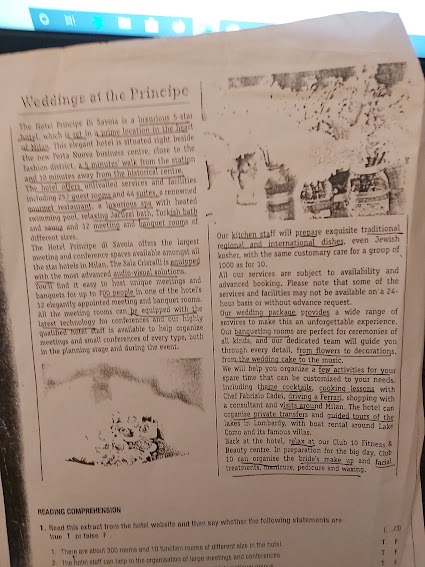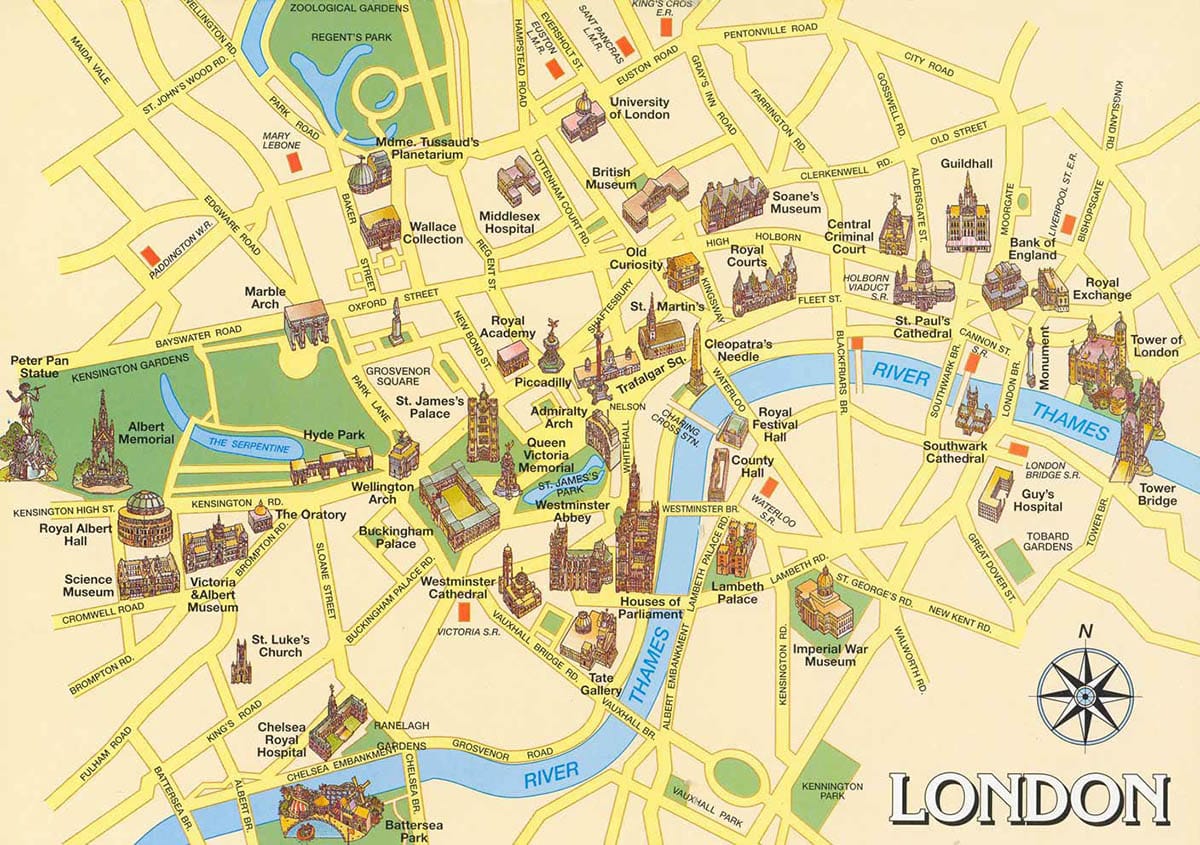Smile Please!
Autore: englishcourse
3bt Correzione
TRADUZIONE
- San Miniato is a slow city and is famous for its truffles, sausages, olive oil, vegetables and wines.
- The white truffle exhibition takes place in San Miniato in November and December. It attracts thousands of Italian and foreign tourists. Truffles are very expensive and populate the tables of the best restaurants in the world.
- After lunch you can wander through the cobbled streets of the city and go shopping
- During the tour we stop at the restaurant “I’Upupa”, where you can taste typical Tuscan products.
- The landscape is wonderful with castles, small villages and ancient churches.
- Frederick II of Swabia built his castle in San Miniato in the 13th century.
- Our walking tour begins in Piazza del Popolo where you can admire the church of San Domenico with the cloisters of the convent.
- The Via Angelica is worth a visit .It is famous for its frescoes which date back to the 14th century.
- If you are interested in history we suggest you visit the archaeological site of San Genesio, where you can see the remains of an 11th- century village.
- Continuing along via Conti, we reach the Palace of the Seminary characterized by its concave facade. The palace is decorated with 18th- century frescoes and phrases in Latin. You can see the wooden doors of the ancient shops.
- Dinner and overnight stay at hotel San Miniato.
- Inside the cathedral we can admire wonderful frescoes, sculptures and paintings,a baptismal font andan altar. The cathedral has a beautiful Romanesque facade but it also has Gothic and Renaissance elements.
- The town Hall is located in front of the Sanctuary of theMost Holy Crucifix. Sala del Consiglio Comunale contains frescoes depicting the history of San Miniato,
- We suggest you have lunch at La Bisteccheria, a typical restaurant in the centre of San Miniato. Here you can eat cold cuts, steak, roast potatoes and cantuccini and drink typical Tuscan wines.
- After dinner we can go to La Notte nera, an important event which takes placein San Miniato in June.
- Leaving the fortress behind us we head to the Convent of Siatn Francis. It was founded by Siant Francis During your free time you can go shopping in the shops of the city, have a walk in IL Piazzale or go to the fortress, the symbol of the city.
- After lunch we head to Piazza Bonaparte flanked by ancient palaces built between the 16th and 18th centuries.
- Grifoni Palace is a palace in Renaissance style which dates back to 1555.
Christmas
Christmas in Britain
Questions
-
When was the first ever Christmas card posted?
-
Who introduced the first Chrismas Tree in Britain in 1840?
-
Where does a large Christmas tree stand ?
-
When are Carols are often sung?
-
Where do children hang stockings?
-
What does Christmas Dinner consist of?
-
When is Boxing Day?
http://www.worldholidaytraditions.com/Countries/England
“Merry Christmas”

Christmas is Britain’s most popular holiday and is characterized by traditions which date back hundreds of years. Many Christmas customs which originated in Britain have been adopted in the United States.
The first ever Christmas card was posted in England in the 1840s, and the practice soon became an established part of the build-up to Christmas. Over a billion Christmas cards are now sent every year in the United Kingdom, many of them sold in aid of charities.
Christmas decorations in general have even earlier origins. Holly(agrifoglio), ivy (edera) and mistletoe are associated with rituals going back beyond the Dark Ages. (The custom of kissing beneath a sprig (ramoscello) of mistletoe is derived from an ancient pagan tradition.) The Christmas tree was popularized by Prince Albert, husband of Queen Victoria, who introduced one to the Royal Household in 1840. Since 1947, the country of Norway has presented Britain annually with a large Christmas tree which stands in Trafalgar Square in commemoration of Anglo-Norwegian cooperation during the Second World War.
Popular among children at Christmas time are pantomimes: song and dance dramatizations of well-known fairy tales which encourage audience participation.
Carols are often sung on Christmas Eve by groups of singers to their neighbors, and children hang a stocking on the fireplace or at the foot of their bed for Santa Claus (also named Father Christmas) to fill. Presents for the family are placed beneath the Christmas tree.
Christmas Day sees the opening of presents and many families attend Christmas services at church. Christmas dinner consists traditionally of a roast turkey, goose or chicken with stuffing and roast potatoes. This is followed by mince pies and Christmas pudding flaming with brandy, which might contain coins or lucky charms for children. (The pudding is usually prepared weeks beforehand and is customarily stirred by each member of the family as a wish is made.) Later in the day, a Christmas cake may be served – a rich baked fruit cake with marzipan, icing and sugar frosting.
The pulling of Christmas crackers often accompanies food on Christmas Day. Invented by a London baker in 1846, a cracker is a brightly colored paper tube, twisted at both ends, which contains a party hat, riddle and toy or other trinket. When it is pulled by two people it gives out a crack as its contents are dispersed.
Another traditional feature of Christmas afternoon is the Queen’s Christmas Message to the nation, broadcast on radio and television.
The day after Christmas is known in Britain as Boxing Day, which takes its name from a former custom of giving a Christmas Box – a gift of money or food inside a box – to the deliverymen and tradespeople who called regularly during the year. This tradition survives in the custom of tipping the milkman, postman, dustmen and other callers of good service at Christmas time.
Of Special Note…
MISTLETOE, considered sacred by the British Druids, was believed to have many miraculous powers. Among the Romans, it was symbol of peace, and, it was said that when enemies met under it, they discarded their arms and declared a truce. From this comes our custom of kissing under the mistletoe. England was the first country to use it during the Christmas season.
Christmas in Italy
LINK FOR TWINSPACE
https://answergarden.ch/2259880
Ed. Civica Parliament /The Monarch
https://sway.office.com/aeMLEarJu1GVvXUL?ref=Link&loc=play
https://www.bbc.com/news/uk-23272491
Questions About the 2 videos
- Who does the Queen appoint?
- Who is the temporal head of the Church of England ?
- What are the foot guards responsible for?
- What do they wear?
- Which members of the Royal family can you see in the video?
- How many birthdays does the Queen have?
- When was she born?
- How old is she?
- Can she vote?
- Who is the Commander-in Chief of the Armed Forces ?
- Can she declare war or peace ?
- Who is the spiritual head of the Church of England ?
- Explain the meaning of the sentence: she reigns but she doesn’ t rule.
- What is role of the Queen?
- What are the names of her four children?
- What is the Magna Charta? Why was it important?
- Who signed it?
- What is Parliament composed of?
- Who becomes Prime Minister after the elections?
- Who is the House of Commons elected by?
- How many MPs are there in The House of Commons?
- How many members is the Cabinet composed of ?
- Who is the President of the House of Commons?
- What is the function of the House of Commons? ( Revision or legislative)
- How often are general elections held?
BUCKINGHAM PALACE
https://www.royal.uk/reservicing-buckingham-palace-0
https://www.rct.uk/resources/interactive-virtual-reality-tour-of-buckingham-palace-for-schools
GIFTS
https://www.harrods.com/en-gb/shopping/souvenirs-harrods-womens-accessories-harrods-shopper-bags


